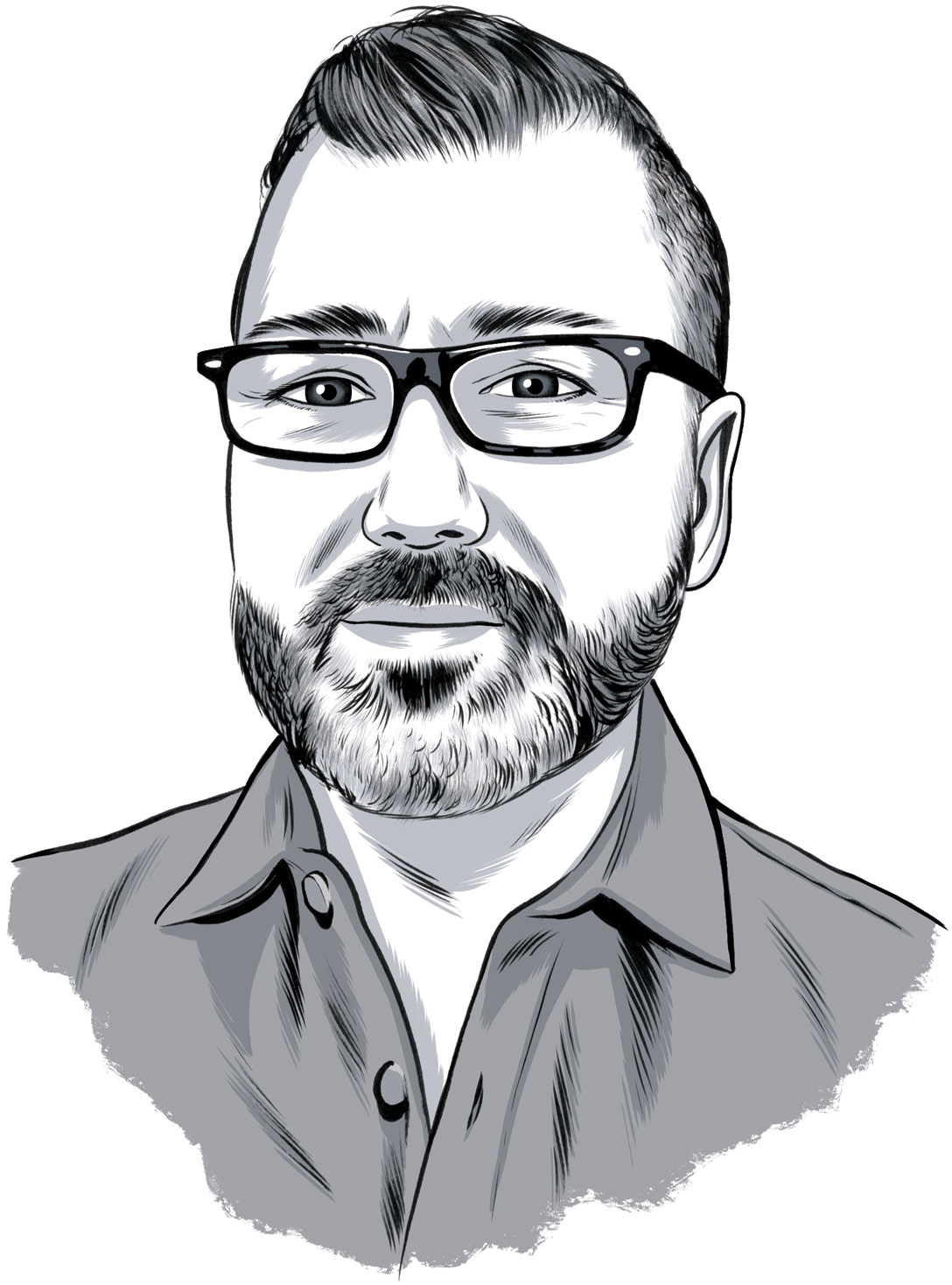

Illustration: Joel Kimmel
Michael O’Heaney ’95
The Right Stuff
by Kristin Baird Rattini
As executive director of The Story of Stuff Project, Michael O’Heaney ’95 has had a front-row seat to how the internet and digital technologies have irrevocably changed storytelling, politics and activism. What started in 2007 (when YouTube was in its infancy) as a 20-minute online animated video about how we make, use and throw away stuff has evolved into a movement dedicated to a more healthy and just planet. The San Francisco-based nonprofit has more than a million members worldwide and has produced dozens of solutions-focused videos on environmental and social-justice issues, including the recent documentary The Story of Plastics.
Q. What drew you to social-change work?
The opportunities at Bucknell set me on the path. I majored in international relations, and through the January Plan I traveled to Guatemala and Cuba with then-chaplain Alison Boden, who was a real social-justice advocate on campus. I also studied abroad in Zimbabwe. Those experiences sparked a passion for understanding the world, for human rights and for environmental sustainability that have been at the core of my career.
Q. The project’s animated videos have drawn tens of millions of views. What makes them so effective?
We environmentalists have a well-deserved reputation for doom and gloom and taking ourselves too seriously. We seem to think having facts, data and experts on our side should be enough, but people don’t respond to that. So our videos use human stories, humor and everyday language to unlock big concepts in a way that isn’t daunting for our viewers.
Q. How have the project and other social-change organizations capitalized on the advances in digital technology and social networking?
People’s creativity has been unleashed. We’re able to connect across great distance and even difference, and our ability to understand and impact the decision-making of governments, businesses and others has expanded dramatically.
Q. Why did you undertake a full-length, live-action documentary to tell The Story of Plastics?
From listening to our members, we knew this topic was of significant interest. We couldn’t do the story justice or bring out the human element without doing a live-action feature documentary, which the Discovery Channel aired last year. Only 9% of the 6.3 billion metric tons of plastic waste produced has been recycled. We wanted to tell the story of where the plastic comes from, why there is suddenly so much more of it and where it goes when we throw it away.
Q. Your organization has more than a million members worldwide. What’s the secret to sparking civic engagement?
There are two: purpose and connection. They are also the keys to sustaining civic engagement. Trying to change the world can be a slog. It’s much easier if you’re working on a problem that you have a passion for, whether that’s getting a pothole filled on your street or solving global warming. That’s your purpose. It’s also easier if you’re not doing it alone. That’s connection. Finding a community that shares your purpose helps a lot.
Q. What are you most proud of from your 12 years with the Story of Stuff Project?
We were instrumental in helping pass the federal law banning plastic microbeads in personal- care products in 2015. We’ve helped change corporate behavior. We’ve built community institutions and brought a whole lot of new people into the fight. You know, when we set out, we thought this project might last a year. But our commitment to learning and listening and experimentation has sustained us, and that’s the only way that we as a movement and as a people are going to be nimble to overcome serious problems such as climate change.